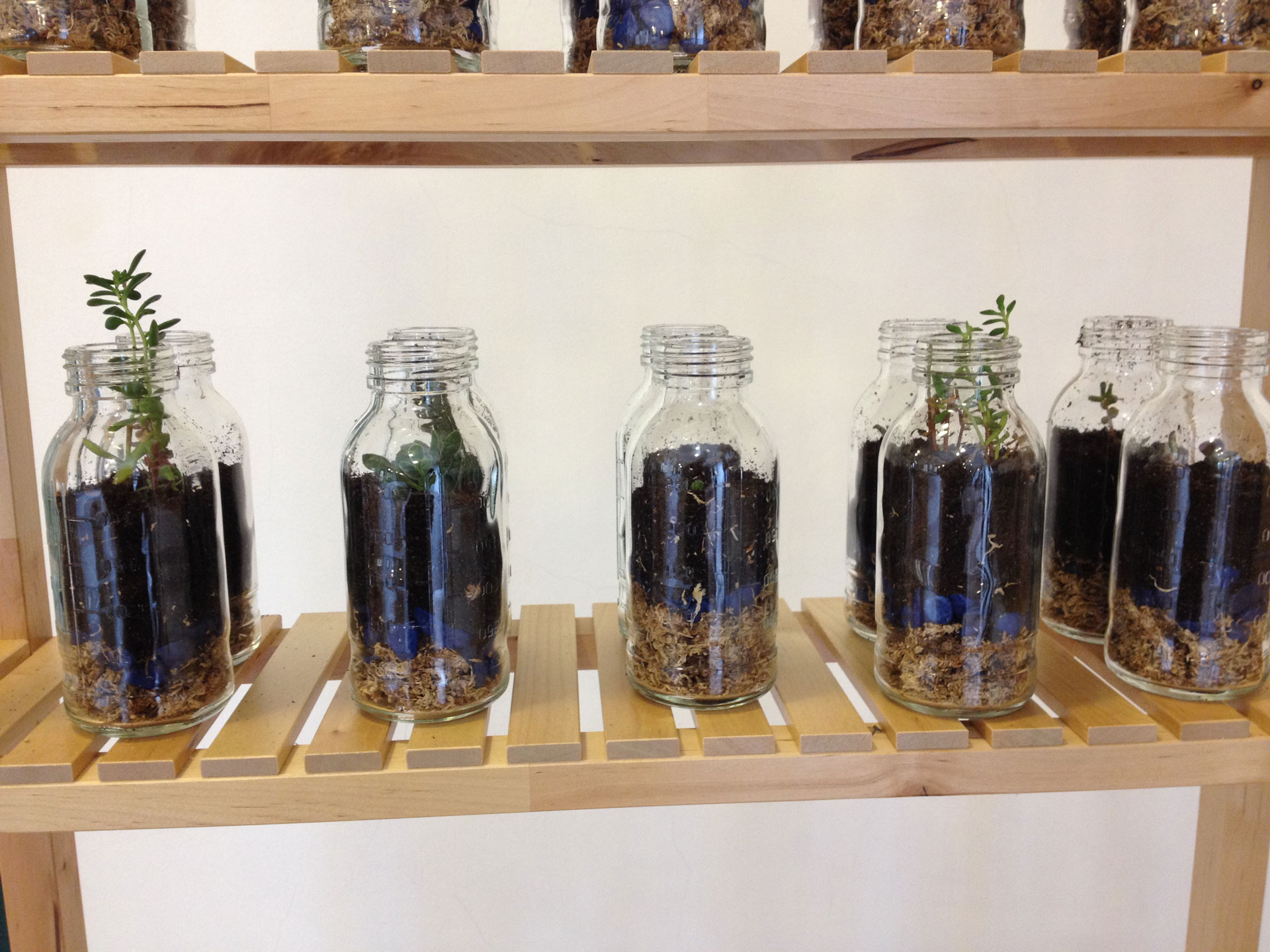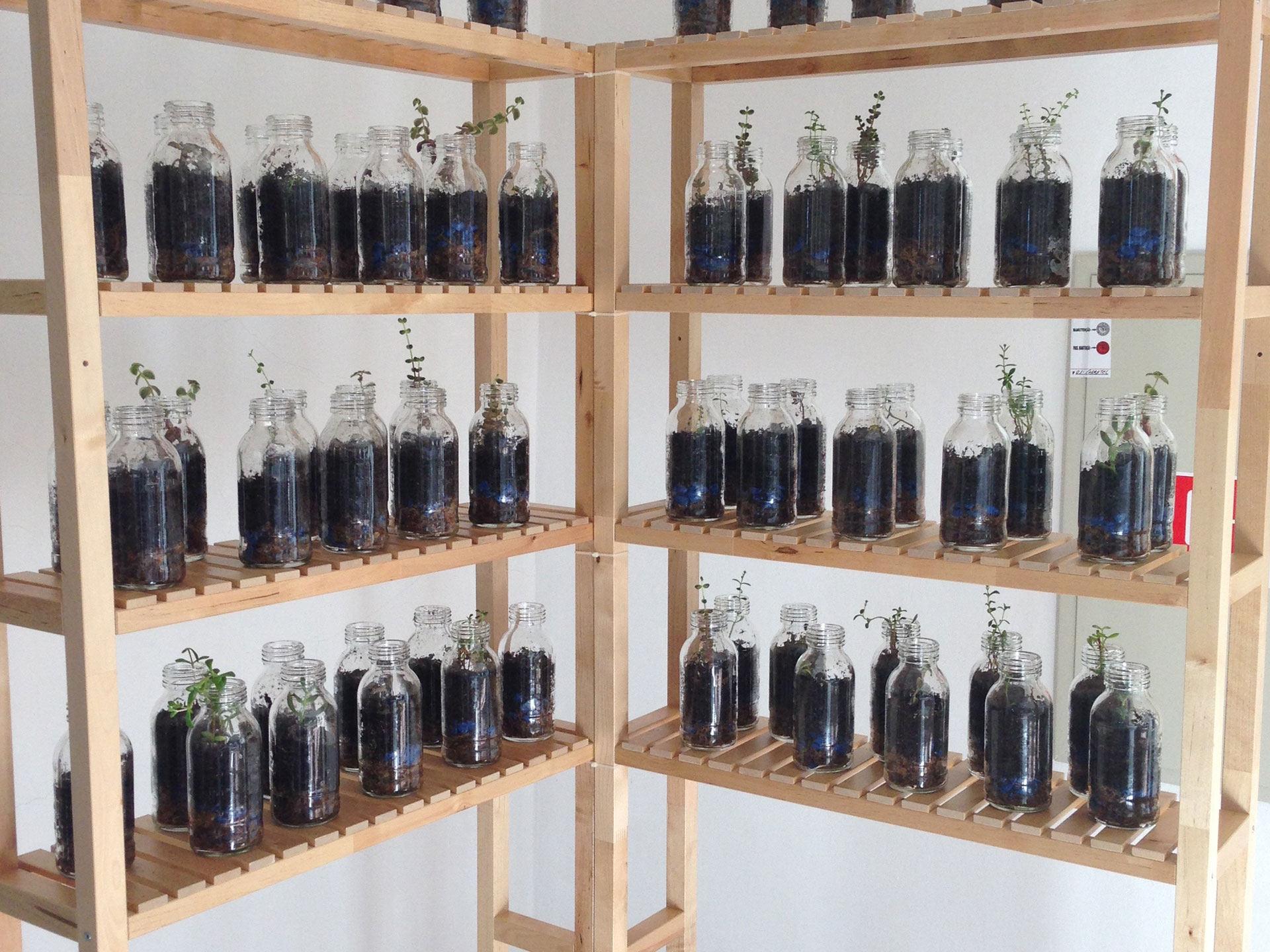

Previous
Next
Life in a bottle
Welive in a world where very little is untouched, where nature is humanized and manmade.
This work is a reflection on the constant need we seem to have to control what we see and feel. This is a work about the limits of our humanity and about the way we distinguish ourselves from nature while, at the same time, we try hard to maintain a strong connection to our natural essence.
It wanders in ideas wonderfully expressed in the work of William Cronon:“The time has come to rethink wilderness. This will seem aheretical claim to many environmentalists, since the idea of wilderness has for decades been a fundamental tenet—indeed, a passion—of the environmental movement, especially in the United States. For many Americans wilderness stands as the last remaining place where civilization, that all too human disease, has not fully infected the earth. It is an island in the polluted sea of urban-industrial modernity, the one place we can turn for escape from our own too-muchness. Seen in this way, wilderness presents itself as the best antidote to our human selves, a refuge we must somehow recover if we hope to save the planet. As Henry David Thoreau once famously declared, “In Wildness is the preservation of the World.”1
But is it? The more one knows of its peculiar history, the more one realizes that wilderness is not quite what it seems. Far from being the one place on earth that stands apart from humanity, it is quite profoundly a human creation—indeed, the creation of very particular human cultures at very particular moments in human history. It is not a pristine sanctuary where the last remnant of an untouched, endangered, but still transcendent nature can for at least a little while longer be encountered without the contaminating taint of civilization. Instead, it’s a product of that civilization, and could hardly be contaminated by the very stuff of which it is made. Wilderness hides its unnaturalness behind a mask that is all the more beguiling because it seems so natural. As we gaze into the mirror it holds up for us, we too easily imagine that what we behold is Nature when in fact we see the reflection of our own unexamined longings and desires. For this reason, we mistake ourselves when we suppose that wilderness can be the solution to our culture’s problematic relationships with the nonhuman world, for wilderness is itself no small part of the problem.
(…)
Among the best proofs that one had entered a sublime landscape was the emotion it evoked. For the early romantic writers and artists who first began to celebrate it, the sublime was far from being a pleasurable experience. The classic description is that of William Wordsworth as he recounted climbing the Alps and crossing the Simplon Pass in his autobiographical poem “The Prelude.”
There, surrounded by crags and waterfalls, the poet felt himself literally to be in the presence of the divine—and experienced an emotion remarkably close to terror:
“The immeasurable height
Of woods decaying,
never to be decayed, The stationary blasts of waterfalls,
And in the narrow rent at every turn
Winds thwarting winds, bewildered and forlorn,
The torrents shooting from the clear blue sky,
The rocks that muttered close upon our ears,
Black drizzling crags that spake by the way-side
As if a voice were in them, the sick sight
And giddy prospect of the raving stream,
The unfettered clouds and region of the Heavens,
Tumult and peace, the darkness and the light
Were all like workings of one mind, the features
Of the same face, blossoms upon one tree;
Characters of the great Apocalypse,
The types and symbols of Eternity,
Of first, and last, and midst, and without end.”2 3
1.Henry David Thoreau, “Walking,” The Works of Thoreau, ed. Henry S. Canby (Boston, Massachusetts: Houghton Mifflin, 1937), p. 672.
2.William Wordsworth, “The Prelude,” bk. 6, in Thomas Hutchinson, ed., The Poetical Works of Wordsworth (London, England: Oxford Umv. Press, 1936), p. 536.
3. William Cronon. “The Trouble with Wilderness; or, Getting Back to the Wrong Nature”, in William Cronon, ed., Uncommon Ground: Rethinking the Human Place in Nature, New York: W. W. Norton & Co., 1995, 69-90.

